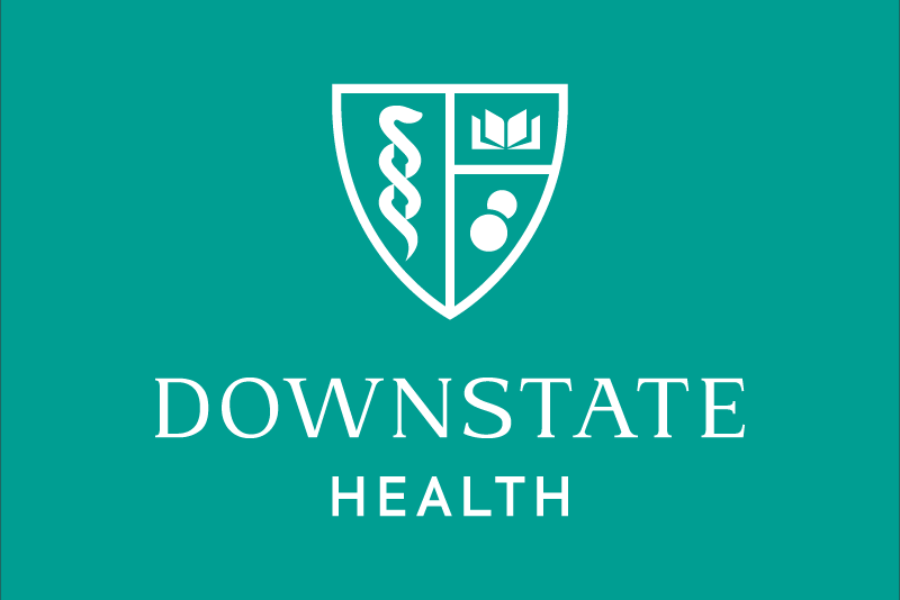
Patrick Geraghty, PhD
Associate Program Director
Assistant Professor, Division of Pulmonary & Critical Care Medicine
Internal Medicine Residency Program, Department of Medicine
Dr. Geraghty’s research group investigates immune responses in diseased lungs, with a specific emphasis on smoke-related chronic obstructive pulmonary disease (COPD), alpha-1 antitrypsin, pulmonary infections, and pulmonary fibrosis.
In diseased lungs, the immune responses undergo significant changes, that impact subsequent responses to infection and lung remodeling that worsen disease progression. Both chronic and acute lung diseases, such as infections, interstitial lung diseases, malignancies, or obstructive diseases can lead to a disruption in the balance between pro-inflammatory and anti-inflammatory mediators. Exposure to environmental factors such as pathogens and smoke (tobacco or pollution) can lead to dysregulated inflammation resulting in enhanced recruitment of immune cells, including neutrophils, macrophages, and lymphocytes, to the lung parenchyma and airways. Unregulated release of cytokines and chemokines can exacerbate tissue damage and remodeling. Equally, some exposures or pulmonary diseases result in a reduced or modulated immune response that makes the lungs more sustainable to infection, extracellular matrix remodeling, altered inflammation, and mucus production. These immune pathway shifts not only perpetuate lung injury but can also compromise systemic immunity, increasing susceptibility to secondary infections.
Our group explores the role of an important phosphatase in regulating lung inflammation, called protein phosphatase 2A (PP2A). PP2A is susceptible to oxidation and subsequent desensitization of its anti-inflammatory activities. This leaves the lung more vulnerable to unregulated inflammation and enhanced lung injury during infection. Deciphering the biological relevance of PP2A responses in the lung not only enhances our knowledge of its biochemical function but can also unearth new therapeutic targets. Our experimental approaches include a wide variety of techniques in molecular biology, biochemistry, cell biology, medicinal chemistry, and physiology.
Positions
- Director for the Internal Medicine Research Track: SUNY Downstate Health Sciences University, 2019-ongoing
- Associate Program Director for Research and Academic Development in the Internal Medicine Residency Program: SUNY Downstate Health Sciences University, 2019-
- Assistant Professor: SUNY Downstate Health Sciences University, 2015-ongoing
- Associate Research Scientist: Icahn School of Medicine at Mount Sinai, New York, 2013-2015:
Associate Research Scientist: St. Luke’s Roosevelt Hospital, New York, 2011-2
Education
Undergraduate: National University of Ireland
Advanced Degree: National University of Ireland
Fellowship: Royal College of Surgeons in Ireland, Dublin, Ireland (2007);
Fellowship: Columbia University, New York (2011), NIH T32 Training grant Fellowship
Research
Chronic obstructive pulmonary disease (COPD), alpha-1 antitrypsin, pulmonary infections, and pulmonary fibrosis
Positions:
- Director for the Internal Medicine Research Track: SUNY Downstate Health Sciences University, 2019-ongoing
- Associate Program Director for Research and Academic Development in the Internal Medicine Residency Program: SUNY Downstate Health Sciences University, 2019-
- Assistant Professor: SUNY Downstate Health Sciences University, 2015-ongoing
- Associate Research Scientist: Icahn School of Medicine at Mount Sinai, New York, 2013-2015:
- Associate Research Scientist: St. Luke’s Roosevelt Hospital, New York, 2011-2013
Postdoctoral Fellowships:
- Key signaling in pulmonary diseases: MMP1 regulation in smoke-induced lung disease & HMGA2 driven mesenchymal tumorigenesis. Columbia University, New York (2007-2011), NIH T32 Training grant Fellowship
- Investigating protease regulation in pulmonary diseases. Royal College of Surgeons in Ireland, Dublin, Ireland (2004-2007)
Doctoral Research:
- Investigating the role of the mitochondria in the pathogenesis of Candida albicans. Biology Department. National University of Ireland, Maynooth, Co. Kildare, Ireland (2000-2004). PhD, Doctor of Philosophy
- NIA, R01 AG073317-01A1 grant (Co-investigator), 2023-2027
- Department of Defense, PR220774 grant (Co-investigator), 2023-2025
- NIH, 1R01HL162590, grant (Co-investigator), 2022-2026
- Medical Research Council - UKRI MR/X001504/1 grant (Co-investigator) 2022-2025
- SUNY Downstate Seed Fund grant (Co-PI), 2022-2023
- NIH 1R56AG073317 grant (Co-investigator), 2021-2022
- Department of Defense W81XWH-20-1-0494 grant (Co-investigator), 2020-2022
- Alpha-1 Foundation grant (PI), 2019-2021
- Flight Attendant Medical Research Institute Clinical Investigator Award (PI), 2017-2020
- Alpha-1 Foundation grant (PI), 2017-2019
- Alpha-1 Foundation grant (PI), 2015-2017
- Alpha-1 Foundation (Co-investigator), 2014-2016
- Flight Attendant Medical Research Institute Fellow Award (PI), 2012-2017
- Pillai, M., Lafortune, P., Dabo, A., Yu, H., Park, S.S., Taluru, H., Ahmed, H., Bobrow, D., Sattar, Z., Jundi, J., Reece, J., Rodriguez Ortega, R., Soto, B., Yewedalsew, S., Foronjy, R., Wyman, A., Geraghty, P., and Michael Ohlmeyer, M. Small-Molecule Activation of Protein Phosphatase 2A Counters Bleomycin-Induced Fibrosis in Mice. ACS Pharmacol. Transl. Sci. (2023) 6(11):1659-1672. doi.org/10.1021/acsptsci.3c00117
- Park, S.S., Michelle Mai, M., Ploszaj, M., Cai, H., McGarvey, L., Mueller, C., Garcia-Arcos, I., and Geraghty, P. Type 1 diabetes contributes to combined pulmonary fibrosis and emphysema in male alpha 1 antitrypsin deficient mice. PLoS ONE (2023) 18(10): e0291948. doi.org/10.1371/journal.pone.0291948
- Soto, B., Ahmed, H., Pillai, M., Park, S.S., Ploszaj, M., Reece, J., Taluru, H., Bobrow, D., Yu, H., Lafortune, P., Jundi, B., Costanzo, L., Dabo, A.J., Foronjy, R.F., Mueller, C., Ohlmeyer, M., and Geraghty, P. Evaluating Novel Protein Phosphatase 2A Activators as Therapeutics for Emphysema. Am. J. Respir. Cell Mol. Biol. (2023) Nov;69(5):533-544. doi: 10.1165/rcmb.2023-0105OC.
- Doherty, D.F., Nath, S., Poon, J., Foronjy, R.F., Ohlmeyer, M., Dabo, A.J., Salathe, M., Birrell, Belvisi, M.M., Baumlin, N., Kim, M.D., Weldon, S., Taggart, C. and Geraghty, P. Protein Phosphatase 2A Reduces Cigarette Smoke-Induced Cathepsin S and Loss of Lung Function. Am J Respir Crit Care Med. (2019) Jul 1;200(1):51-62. doi: 10.1164/rccm.201808-1518OC.
- Poon, J., Campos, M., Foronjy, R.F., Nath, S., Gupta, G., Railwah, C., Dabo, A., Baumlin, N., Salathe, M., and Geraghty, P. Cigarette smoke exposure reduces leukemia inhibitory factor levels during respiratory syncytial viral infection. Int J Chron Obstruct Pulmon Dis. (2019) Jun 18; 14:1305-1315. doi: 10.2147/COPD.S196658. eCollection 2019
- Nath, S., Ohlmeyer, M., Salathe, M.A., Poon, J., Baumlin, N., Foronjy, R.F. and Geraghty, P. Chronic cigarette smoke exposure subdues PP2A activity by enhancing expression of the oncogene CIP2A. Am. J. Respir. Cell Mol. Biol., (2018) Dec;59(6):695-705. doi: 10.1165/rcmb.2018-0173OC.
- Foronjy, R., Salathe, M., Dabo, A.J., Baumlin, N., Cummins, N., Eden, E. and Geraghty, P. TLR9 expression is required for the development of cigarette smoke-induced emphysema in mice. Am J Physiol Lung Cell Mol Physiol. (2016) Jul 1;311(1):L154-66. doi: 10.1152/ajplung.00073.2016. Epub 2016 Jun 10.
- Foronjy, R.F., Ochieng, P.O., Salathe, M.A., Dabo, A.J., Eden, E., Baumlin, N., Cummins, N., Barik, S., Campos, M., Thorp, E.B. and Geraghty, P. Protein tyrosine phosphatase 1B negatively regulates S100A9-mediated lung damage during respiratory syncytial virus exacerbations. Mucosal Immunol. (2016) Sep;9(5):1317-29. doi: 10.1038/mi.2015.138. Epub 2016 Jan 27.
- Foronjy, R.F., Taggart, C.C., Dabo, A.J., Weldon, S., Cummins, N. and Geraghty, P. Type I interferons induce lung protease responses following respiratory syncytial virus infection via RIG-I-like receptors. Mucosal Immunol. (2015) Jan;8(1):161-75. doi: 10.1038/mi.2014.54. Epub 2014 Jul 9.
- Foronjy, R.F., Taggart, C.C., Dabo, A.J., Weldon, S. and Geraghty, P. Respiratory syncytial virus infections enhance cigarette smoke induced COPD in mice. PLoS One. (2014) Feb 28;9(2):e90567. doi: 10.1371/journal.pone.0090567. eCollection 2014.
For a complete and updated list of my contributions to science, please see My Bibliography
